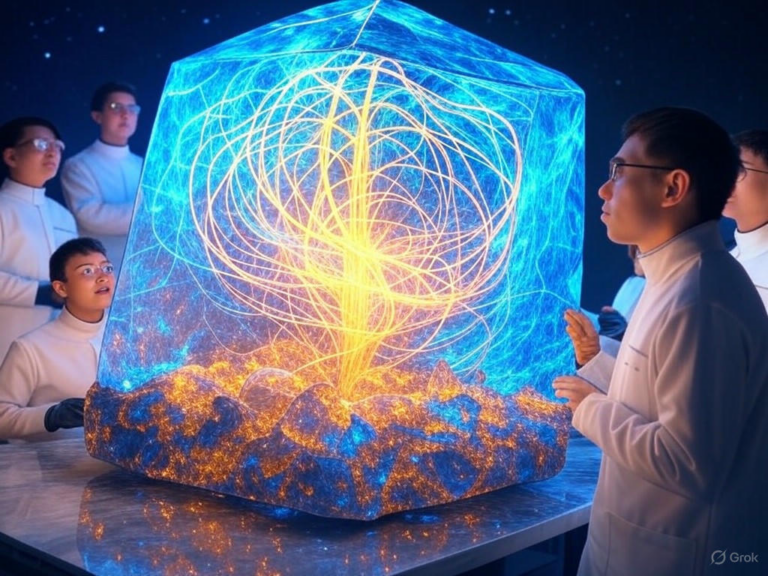
Quantum Phase Transitions: Study Unveils Defying Physics Secrets
Quantum Phase Transitions: Breaking the Rules of Classical Physics
Imagine peering into the subatomic world, where the familiar laws of physics start to bend. Quantum phase transitions are reshaping our understanding, challenging the straightforward transitions we’re used to, like water turning to ice. Recent studies show how these shifts at absolute zero temperature involve quantum fluctuations, not just thermal energy, making quantum phase transitions a cornerstone of modern physics research [1].
This isn’t just abstract science; it’s revealing secrets that could transform everyday technology. For instance, in quantum computing, these transitions might enable faster processors that solve problems classical computers can’t touch. Have you ever wondered what happens when particles behave in ways that defy prediction? That’s the thrill of quantum phase transitions, where order emerges from chaos in unexpected forms.
Scientists worldwide are pushing boundaries, as evidenced by breakthroughs that question the venerable Landau theory. This 20th-century framework assumed phase changes rely on symmetry breaking, but quantum phase transitions often skip that step entirely. By studying materials at near-zero temperatures, researchers are uncovering exotic states that promise advancements in energy-efficient devices and secure communications.
Defying the Norms: Exploring Deconfined Quantum Critical Points
At the heart of these discoveries lies the enigma of deconfined quantum critical points (DQCPs). Here, quantum phase transitions occur between two ordered states without the intermediary of disorder, flipping traditional physics on its head. A team from the University of Hong Kong, including PhD student Menghan Song, has shed light on this, showing how DQCPs could redefine quantum phase transitions in practical applications.
“This defies what we thought was possible,” Song noted in their Science Advances publication. Their work highlights how quantum phase transitions in these points might lead to materials that maintain superconductivity at higher temperatures. Think about it: What if we could create wires that carry electricity without loss, revolutionizing power grids? That’s the potential we’re unlocking through quantum phase transitions.
To grasp this, consider a hypothetical scenario: Imagine a magnet where spins align in patterns that shift seamlessly, bypassing chaos. This is what DQCPs demonstrate, linking directly to quantum spin liquids—materials that could form the backbone of quantum computers. By integrating quantum phase transitions into device design, engineers might soon develop chips that operate at room temperature, making advanced tech more accessible.
Superradiant Phase Transition: Turning Theory into Tangible Breakthroughs
Shifting gears, let’s look at superradiant phase transitions, where atoms synchronize their light emission to create intense, collective effects. Researchers at Rice University have now observed this phenomenon directly, a feat once deemed impossible and a prime example of quantum phase transitions in action. Their experiments involved chains of atoms exhibiting behaviors that enhance quantum interactions, opening doors to ultra-sensitive sensors.
This observation builds on earlier work, such as studies from the University of Iowa on quantum floating phases, which show how quantum phase transitions can lead to stable, floating states in low-dimensional systems. It’s like watching a synchronized dance of particles that amplify signals far beyond individual capabilities. For everyday folks, this could mean better medical imaging or even quantum-based encryption that keeps data safer than ever.
One actionable tip for those intrigued: Explore open-source simulations of quantum systems to see these transitions modeled in real time. By doing so, you might gain insights into how quantum phase transitions could optimize renewable energy storage, ensuring grids handle fluctuations more efficiently.
Why Quantum Phase Transitions Matter for Future Tech
Now, why should quantum phase transitions capture your attention? They’re not just academic curiosities; they’re the key to next-generation innovations. In quantum computing, for example, these transitions help stabilize qubits, the basic units of quantum information, against environmental noise. This stability is crucial for scaling up processors that could solve climate models in seconds.
Consider a relatable example: Just as a smartphone evolved from bulky devices to pocket-sized wonders, quantum phase transitions could miniaturize and enhance computing power. Researchers at institutions like Rice are linking this to superradiant effects, where quantum phase transitions amplify signals for faster data processing. If you’re a tech enthusiast, experimenting with quantum simulators online could be a fun way to dive deeper.
But there’s a challenge: These transitions often require extreme conditions, like near-absolute zero temperatures. Advances in cooling technologies, inspired by quantum phase transitions, are making this more feasible, potentially leading to portable quantum devices. What are your thoughts—could this change how we approach everyday problems like traffic optimization or drug discovery?
The Bigger Picture: Implications for Quantum Computing and Materials
Dive deeper, and you’ll see how quantum phase transitions are intertwining with broader fields. For quantum computing, they offer ways to achieve fault-tolerant systems, where errors self-correct through dynamic phase shifts. A study from Phys.org details how one-dimensional atom chains undergo quantum phase transitions that mimic real-world networks, providing blueprints for robust algorithms.
In materials science, these transitions are fostering development of high-temperature superconductors. Imagine powering cities with less waste—quantum phase transitions could make that a reality by enabling materials that conduct electricity without resistance at practical temperatures. This isn’t science fiction; it’s grounded in ongoing experiments, like those referenced in Eureka Alert.
To make this actionable, consider joining online forums where physicists discuss quantum phase transitions. Sharing ideas there could spark collaborations or even inspire your own projects, such as building simple models to demonstrate phase changes.
Challenges and Ethical Considerations in Quantum Research
Of course, exploring quantum phase transitions isn’t without hurdles. Ethical questions arise, especially regarding resource-intensive experiments that demand rare materials and massive energy. For instance, China’s rapid advancements in quantum tech, as noted by ITIF, raise global competition concerns—how do we ensure equitable access?
One strategy: Advocate for open-access research databases that detail quantum phase transitions, promoting transparency. This could help democratize knowledge, allowing more voices to contribute and preventing monopolies in tech development. Have you considered how these transitions might influence AI ethics, where quantum speeds could accelerate decision-making?
By addressing these, we pave the way for sustainable progress. A brief anecdote: Early pioneers in quantum mechanics faced skepticism, much like today’s researchers, but their persistence led to lasers and semiconductors. Your engagement could be the next step in that legacy.
Wrapping Up: The Road Ahead for Quantum Phase Transitions
As we wrap up, it’s clear that quantum phase transitions are more than just defying physics—they’re reshaping our future. From enhancing quantum computing to revolutionizing materials, the possibilities are vast and exciting. Keep an eye on emerging studies, as they continue to unravel these secrets.
If this sparks your curiosity, why not share your thoughts in the comments below? Explore related topics on our site, like quantum entanglement, and let’s discuss how quantum phase transitions could impact your world. Your input might just inspire the next big breakthrough—thanks for reading!
Sources
- Defying Physics: New Study Reveals the Secrets of Quantum Phase Transitions. The Debrief. Link
- Scientists Observe Exotic Quantum Phase Once Thought Impossible. The Quantum Insider. Link
- Scientists Observe Exotic Quantum Phase Once Thought Impossible. Rice University News. Link
- UI Researchers Study Quantum Floating Phases. University of Iowa Physics. Link
- Phase Transition in 1D Chain of Atoms. Phys.org. Link
- News Release on Quantum Research. EurekAlert. Link
- China’s Innovation in Advanced Industries. ITIF. Link
- Science Daily Release on Quantum Phases. Science Daily. Link
quantum phase transitions, deconfined quantum critical points, superradiant phase transition, quantum physics, quantum materials, quantum computing, Landau theory, exotic quantum phenomena, quantum spin liquids, high-temperature superconductors







